Monday 31 December 2018
The best iPhone SE deals in the January sales 2019
The iPhone SE may have been officially removed from the Apple Store, but the budget Apple smartphone continues to sell at some seriously rapid speeds. That's largely because the cheapest iPhone on the market recently had yet another price drop - and on this page you'll find the best iPhone SE deals in the UK.
Following Apple's product launch back in September, it feels like the iPhone SE 2 is still no closer to being released. But that hasn't stopped tariffs falling and you can now get iPhone SE deals on contract for a mere £15 per month - that means around £400 over the course of the contract!
The tech world rejoiced when the iPhone SE was released. Finally, a new Apple phone that doesn't require you to remortgage your house - unlike the iPhone XS Max! It looks and feels exactly the same as the iPhone 5S. But instead of sporting two-year-old hardware it's fully up to date, with a super-fast CPU and graphics, and the 12MP iSight camera straight out of the iPhone 6S.
If cheap iPhone SE deals are what you seek, then you've definitely come to the right place. Use TechRadar's comparison chart to easily find the ideal plan, or scroll down further to find our pick of the best SE deals on the market.
More options: iPhone 8 deals | iPhone 7 deals | iPhone 6S deals | iPhone deals | Best mobile phone deals | iPhone SE review
Best iPhone SE deals across all UK networks:
Lower down the page you'll be able to read about all of the best iPhone SE deals on a model-by-model and network-by-network basis. But first of all here are the best deals so you can instantly see what the best offers are from EE, O2, Three and Vodafone.


Launched back in March 2016, the 'Special Edition' iPhone SE was a rare example of Apple dropping its entry-level price to allow bargain-hunters a piece of the iPhone pie. It reduced the screen size from the iPhone 6, but kitted it out with the same camera as the iPhone 6S. In short, it's a premium smartphone with a lower price tag – and we like that!
Read TechRadar's full iPhone SE review

Now let's break down the best iPhone SE deals by network...

Best iPhone SE deals on EE
Best iPhone SE deals on O2
Best iPhone SE deals on Vodafone
Best iPhone SE deals on Three
from TechRadar: computing components news http://bit.ly/1RDY0rD
via IFTTT
Sunday 30 December 2018
Best CPU cooler 2019: top CPU coolers for your PC
What’s cooler than being cool? That’s right, keeping your PC components ice cold. And, before you go out to find more exciting parts like the best graphics cards, you should start your best gaming PC build off with the best CPU cooler. After all, lower CPU temps will make your computer last longer and be more performant.
The best CPU coolers are available in all kinds of varieties, and the right cooler for your build depends on the kind of PC you’re trying to build. Luckily, the best CPU coolers are available in a wide range of budgets, too – some of the best air coolers are extremely affordable. Don’t worry if you’re looking for the cream of the crop – you can still drop a ton of cash for elaborate liquid cooling systems for the best processors.
We have you covered, no matter what kind of CPU cooler you’re looking for. We’ll help you find the best CPU cooler you can buy today. And, because we’ve tested them all ourselves, you can use our exclusive price comparison tool, so you can save some cash without compromising on quality.
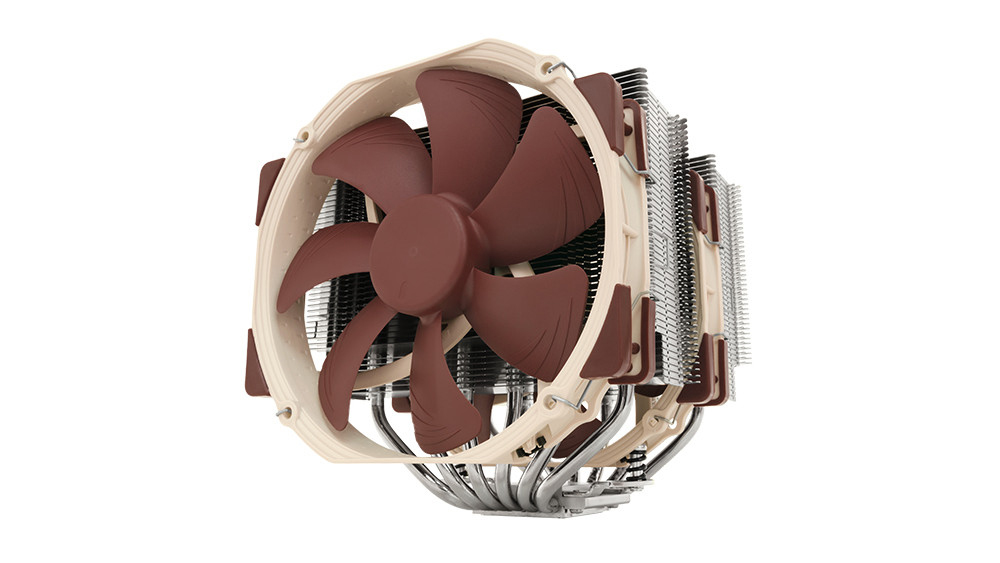
The Noctua NH-D15 is the best CPU cooler you can buy in 2019 simply because it performs just as well as – if not better than some liquid coolers, while costing a fraction of the price. Now, you might not be too familiar with Noctua’s name, as they’re relatively small in the CPU cooler world, but its business is centered around designing coolers, so you know that when you buy one of their products, you’re getting a product by people who really know their craft. Not only will you get fantastic cooling performance from the NH-D15, but it’s nearly silent too.
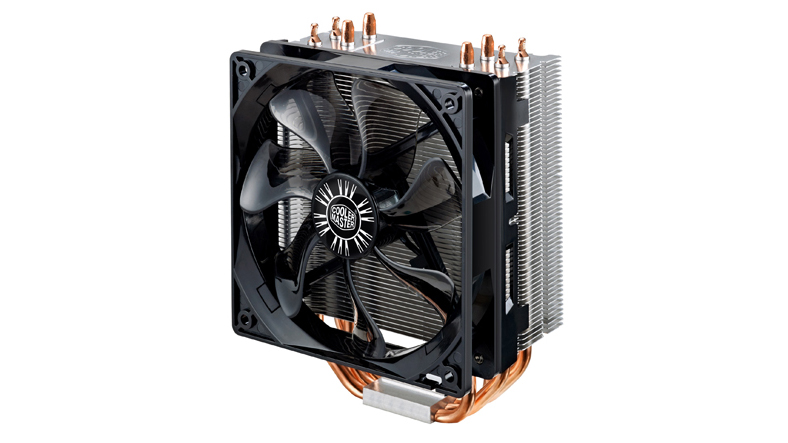
Yeah, we know, it’s been around for years. But, the Cooler Master Hyper 212 Evo is still one of the best CPU coolers on the market – if it ain’t broke don’t fix it. Even though it only features four heat pipes and an aluminum fin structure, this legendary CPU cooler has proven again and again to be just as efficient as any liquid cooling system These air coolers are designed to make heat dissipation a breeze – literally – whether you’re playing Destiny 2 at max settings or reading TechRadar with your web browser.
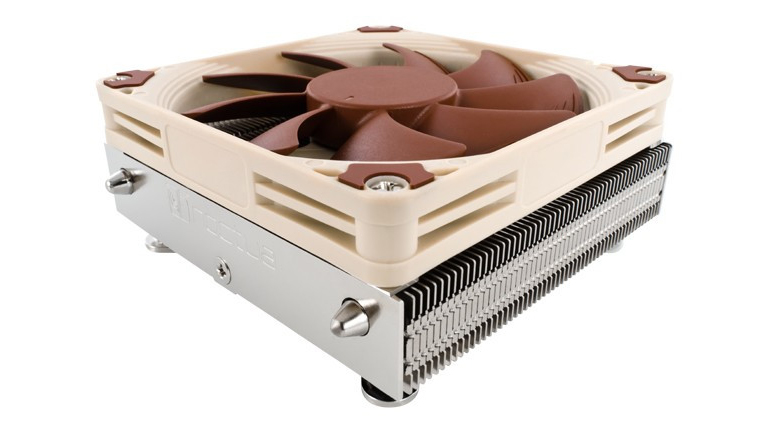
Noctua is an Austrian manufacturer that does one thing, and one thing only: make CPU coolers and fans. What this means is that while the Noctua NH-L9 is tiny, it is still capable of insane cooling with no compromises. This is a fantastic cooler for anyone with a smaller build, or even if you’re using a ton of large components, and you’re not comfortable with liquid cooling.
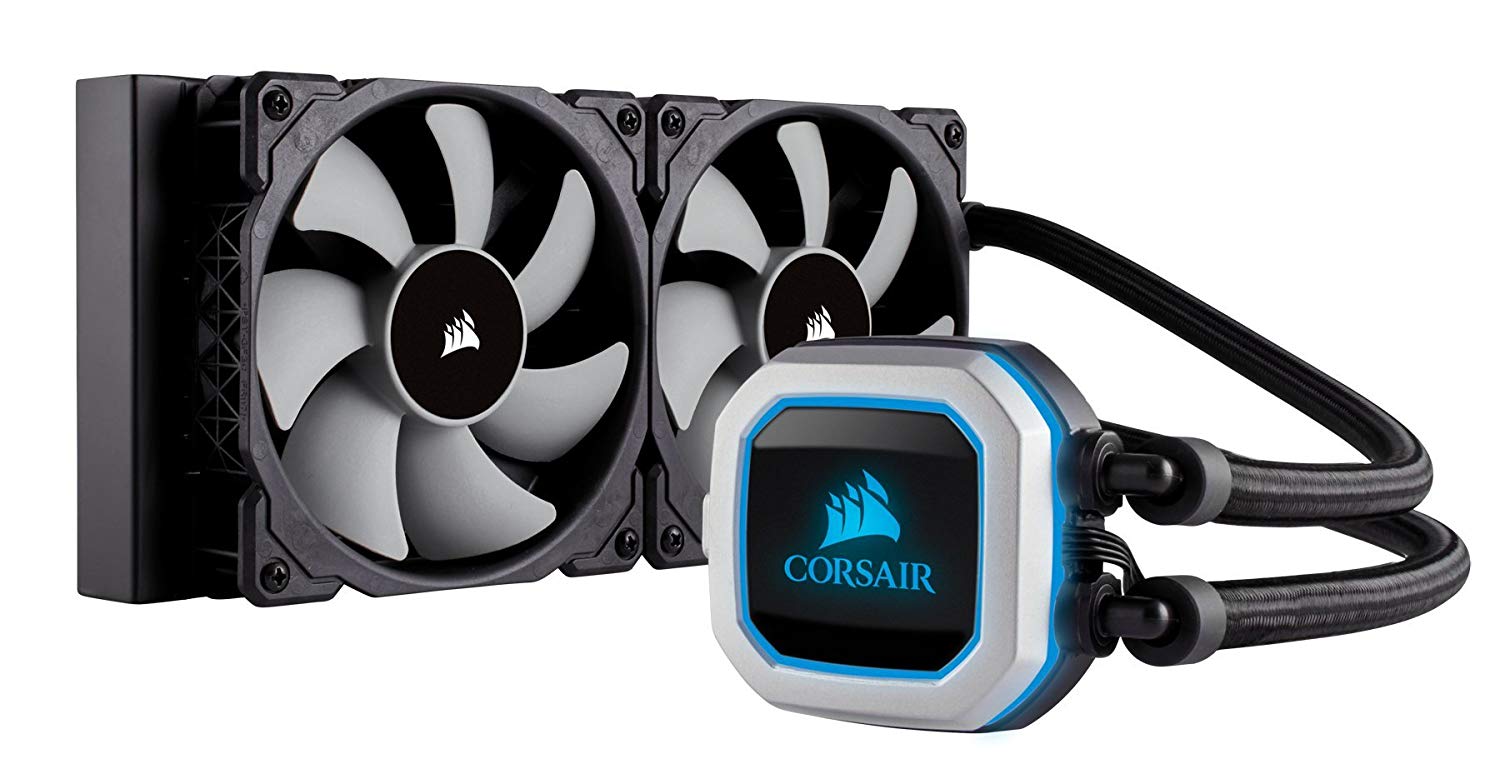
Corsair has been on top of the all-in-one liquid cooling game for a while now, and the H100i Pro continues the trend. Not only is this thing strapped in the RGB lighting we’ve come to expect from Corsair, but it also features impressive cooling performance, thanks in part to its powerful and unique fans, which you can control through Corsair’s iCue software. This all results in a CPU cooler that not only performs well, but that is also completely customizable.
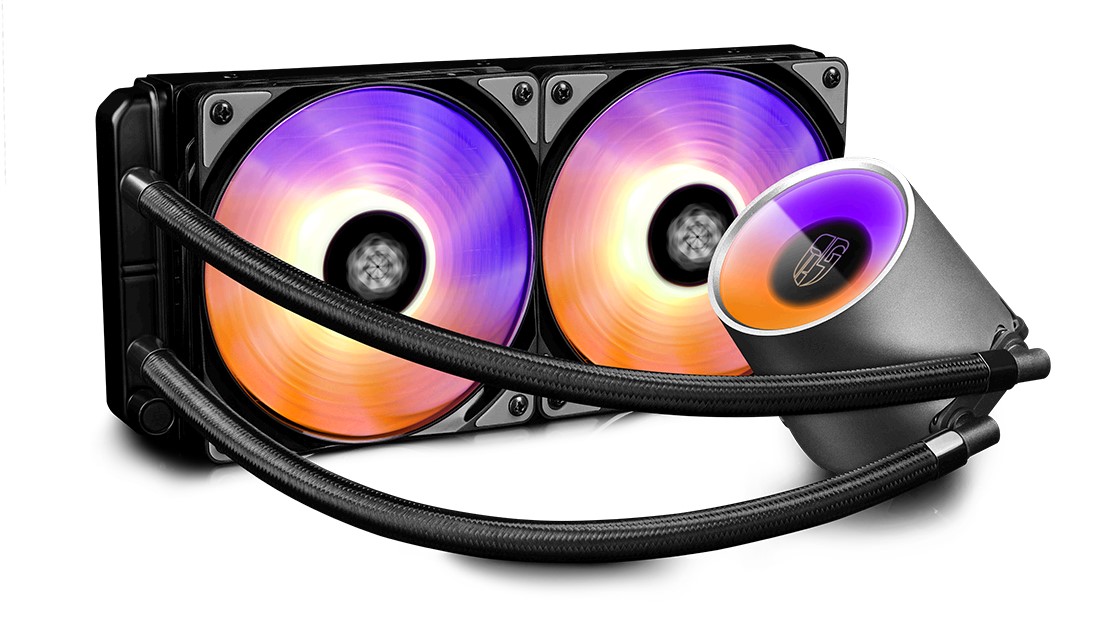
If you’re looking for a powerful liquid cooler that’ll help contribute to your epic RGB setup, the Deepcool Gamerstorm Castle 240 RGB is the best CPU cooler for you. Beyond the ridiculous name, it’s a reliable AIO cooler that can push your overclocks higher and higher with addressable RGB that’s compatible with a wide range of controllers – so you can effortlessly sync your lighting. The CPU Block stands a little high, but when it looks this good, does it really matter?
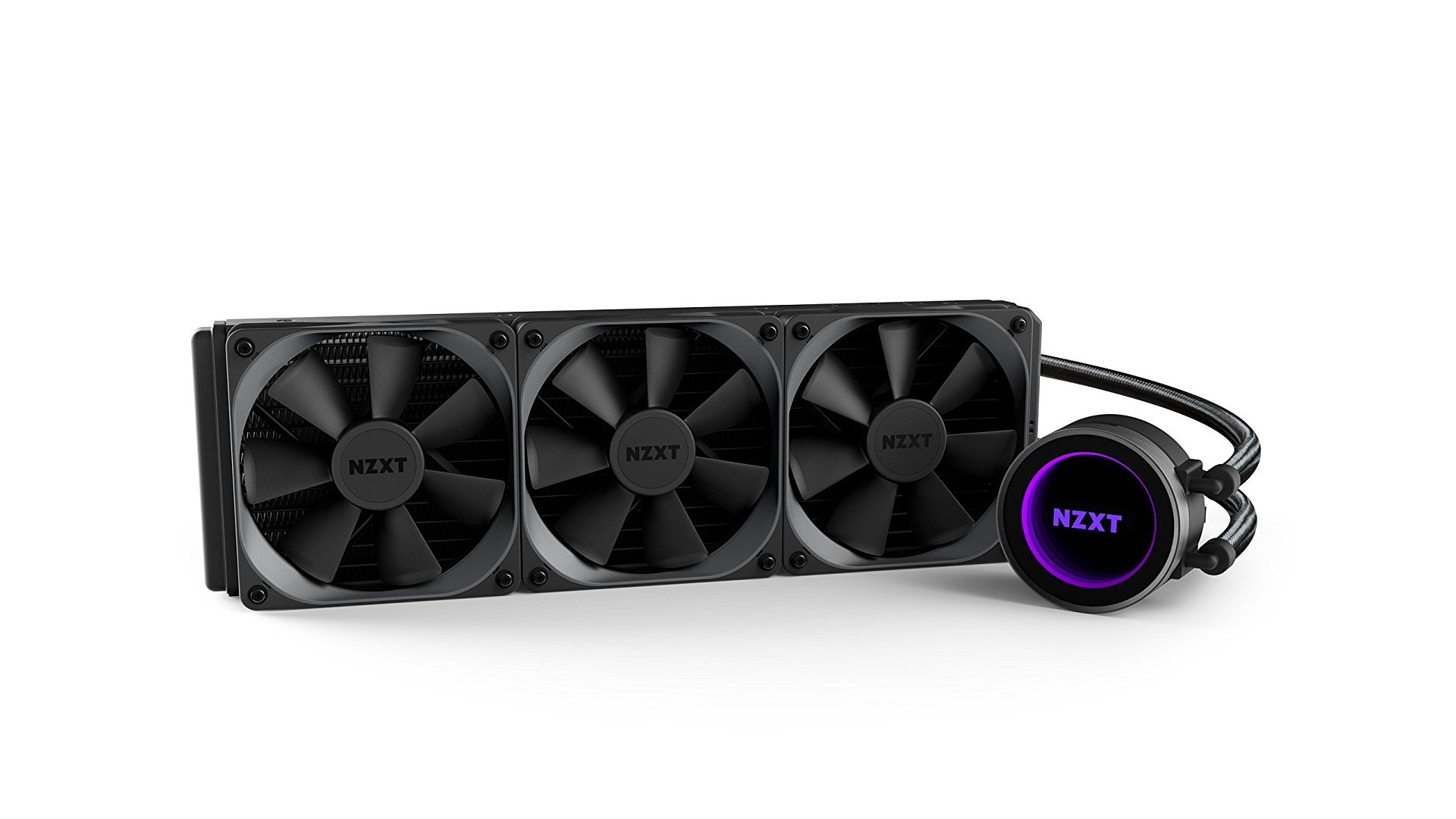
If you’re running one of the best processors, and you want to push it to the limit, the NZXT Kraken X72 is the best CPU cooler for overclocking. Not only does it pack a gigantic radiator, but its high fan speeds ensure that cooling performance is top-notch all the time. And, because it’s 2019, it features addressable RGB and an infinite mirror design that looks amazing in any case. Then, to top it all off, the NZXT Kraken X72 is backed by a 6 year warranty.

There isn’t a single component that can’t be improved through RGB, and Cooler Master is well aware – jumping on the RGB bandwagon with the MasterLIquid ML 120R RGB. What’s more, it integrates some of the first addressable LEDs seen on a liquid cooler. This all-in-one liquid cooling solution isn’t just about aesthetics – it features an oxidation free pump and an efficient radiator. This means that not only will it last longer – but it’ll keep your CPU cooler, and all without giving up too much case real estate.

For less than 70 big ones in both US dollars and British sterling, the Arctic Liquid Freezer 120 is a deal you can’t pass up if you’re on the prowl for a liquid cooler that won’t break the bank. While it lacks the bells and whistles of pricier, more extravagant liquid coolers, like the NZXT Kraken, the Arctic Liquid cooler is enough to get you by, not to mention it’s still a massive step up from the classic fan and heatsink pairing. So, while you can’t expect RGB lighting or software – or even hardware-based fan control, the 120mm variant of the Arctic Liquid Freezer will keep your system refrigerated at a (mostly) quiet volume.
- This product is only available in the US and UK at the time of this writing. Australian readers: check out a fine alternative in the Corsair Hydro Series H5 SF

Even if your budget will allow you to really go all-out on a serious liquid cooling solutions, if you have a smaller PC case, you’ll likely not have enough space. That’s where something like the Corsair Hydro H5 SF comes into play. Even on the smallest PC cases, you should able to use this CPU cooler to keep your CPU chilled, even if you have some beastly overclocks going on. And, because it’s a closed loop, you don’t even need to worry about maintenance. Set it up, and let it do its thing – you won’t be disappointed.

Unless you’re already neck deep in the rabbit hole that is silent PC assembly, you’ve probably never heard of NoFan, a South Korean component company that specializes in helping enthusiasts reach that 0dBA silent sweet spot. In doing so, of course, you can count on severely limiting yourself in terms of power, with its CR-95C fanless solution being limited in compatibility to processors whose TDP fall below 95W. Still, the NoFan CR-95C is worth a shot for those sporting low-power rigs that prioritize tranquility over raw horsepower.
- This Product is only available in the US at the time of this writing. UK and Australian readers: check out a fine alternative in the Noctua NH-L9
- We’ve also ranked and reviewed the best gaming keyboards of 2019
from TechRadar: computing components news http://bit.ly/2f3GtjK
via IFTTT
The best motherboard 2019: the top Intel and AMD motherboards we've seen
While they’re not as exciting as the best processors or graphics cards, the best motherboards are probably the most important part of your new PC build. With all the latest PC technology, the best motherboards are the backbone of the best PCs. The best motherboards will help your PC hardware reach its full potential by fully utilizing and optimizing it. They can even beef up your processor – by giving it more overclocking headroom.
Because they’re so critically important to your PC build, you should only consider the best motherboards. If you cheap out and get a crummy motherboard, and it dies on you, you’ll have no recourse but to rebuild your entire PC from scratch – and trust us, that sucks. You should just do yourself a favor, and buy the best motherboard the first time, so you won’t have to go through the chore of replacing a bad one.
There are dozens of motherboards out there, and the marketplace can get confusing. That’s why we went ahead and created this list of the best motherboards on the market. So, let us help you find the best motherboards that we’ve tested ourselves. Not only will they do everything you need them to and more, the best motherboards are built to last.
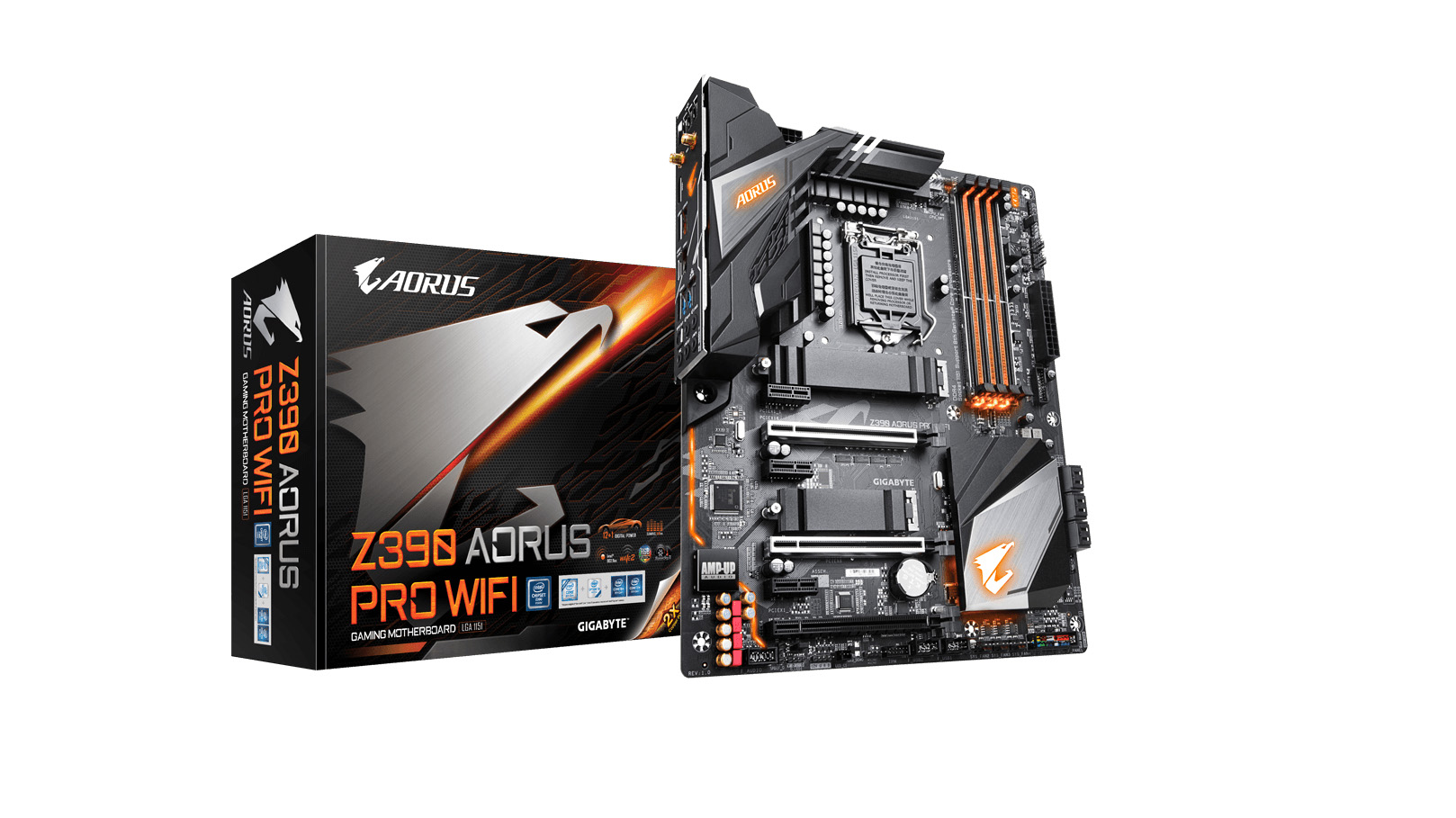
When Intel launched its Coffee Lake Refresh platform, and promised that they’d be the best processors for gaming, we knew we were going to get some kitted out motherboards that put that theory to the test. And, lo and behold, the Z390 Aorus Gaming Pro Wifi – one of the best motherboards on the market today. Packed to the brim with gamer-centric features like reinforced PCIe slots and enough RGB lighting to blind you – this is the best Intel motherboard on the market right now.
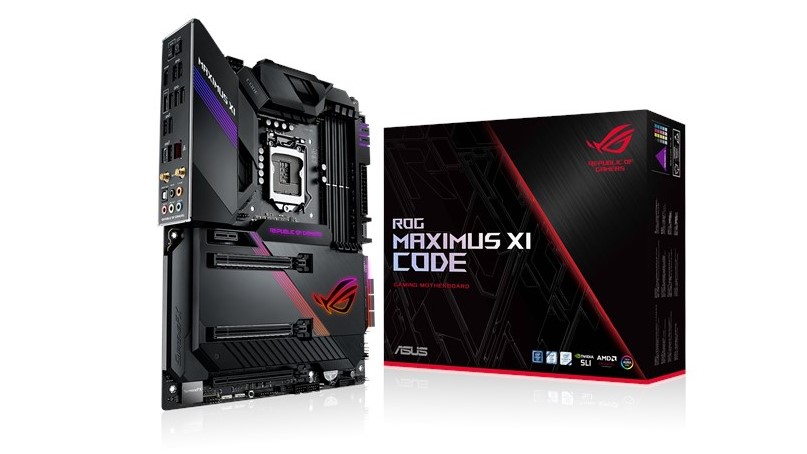
Sometimes, when building a new PC, you’re just want to throw your hands up and say “just give me everything.” In times like this, you’ll want the Asus ROG Maximus XI Code Z390 Gaming. Packed with every feature that Intel’s new Coffee Lake Refresh processors support and then some with a RGB-lit shroud covering every inch of circuitry on this motherboard.
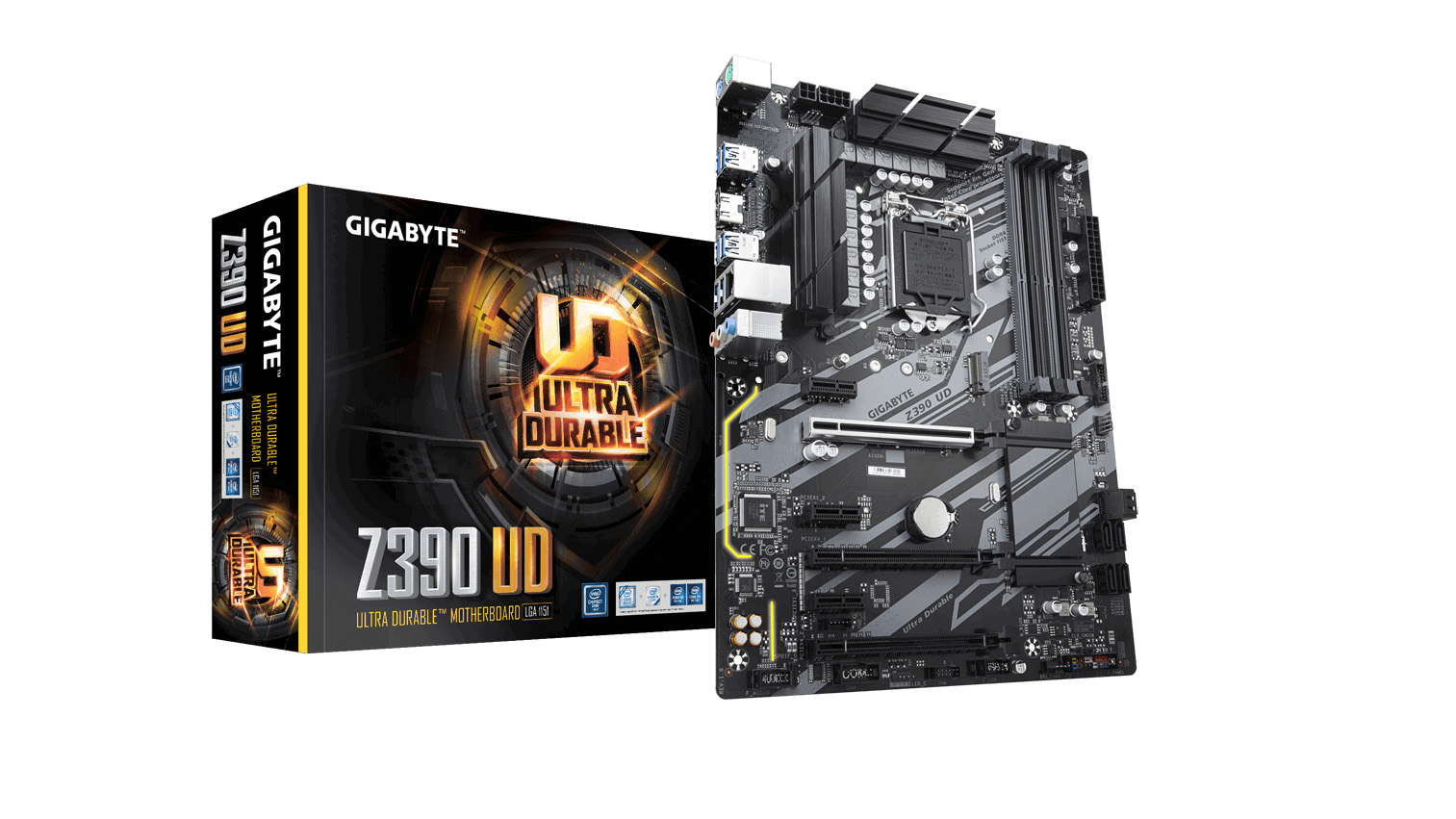
If you want to take advantage of everything Coffee Lake Refresh is capable of, but you can’t afford more exotic motherboards, you might want to look at the Gigabyte Z390 UD. This motherboard doesn’t have the same level of RGB bells and built-in Wi-Fi, but what it does have is a solid price to performance ratio. For a much lower cost, you’re getting all of the essential features that Z390 has to offer, while sacrificing some of the unnecessary features like SLI or extra M.2 slots. If you’re a budget gamer, the Gigabyte Z390 UD might be the best motherboard for you.
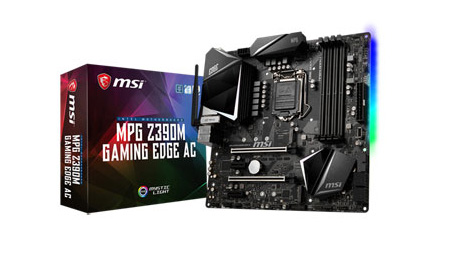
If you’re looking for an edge on the competition, and you don’t have a lot of extra room on your desk, you’re going to want a Micro-ATX motherboard – you’re going to want the MSI MPG Z390M Gaming Edge AC. What you’re getting here is a Micro-ATX motherboard with all the features a full-sized ATX part, but a fraction of the price. Despite it’s reduced size, you still get getting dual M.2 slots, SLI and Crossfire support and all the scalding performance that Intel Coffee Lake Refresh has to offer. If you’re looking for a smaller motherboard, you can’t afford not to get the MSI MPG Z390M Gaming Edge MC.
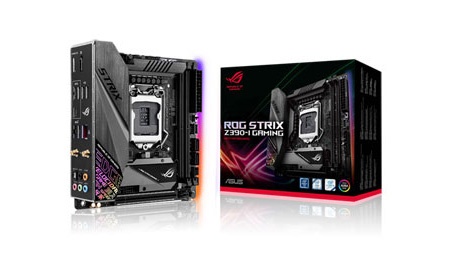
If you need the smallest motherboard that you can get, without compromising on key features of your CPU, you should consider the Asus ROG Strix Z390-I Gaming. With this motherboard you don’t have to compromise on features or power. You don’t even need to settle for a measly 32GB of RAM, thanks to Asus’ double capacity memory compatibility – you can have up to 64GB of memory in the tiniest motherboard you’ve ever seen. Unfortunately, like most Z390 boards, it’s a bit pricey, so prepare yourself for that.
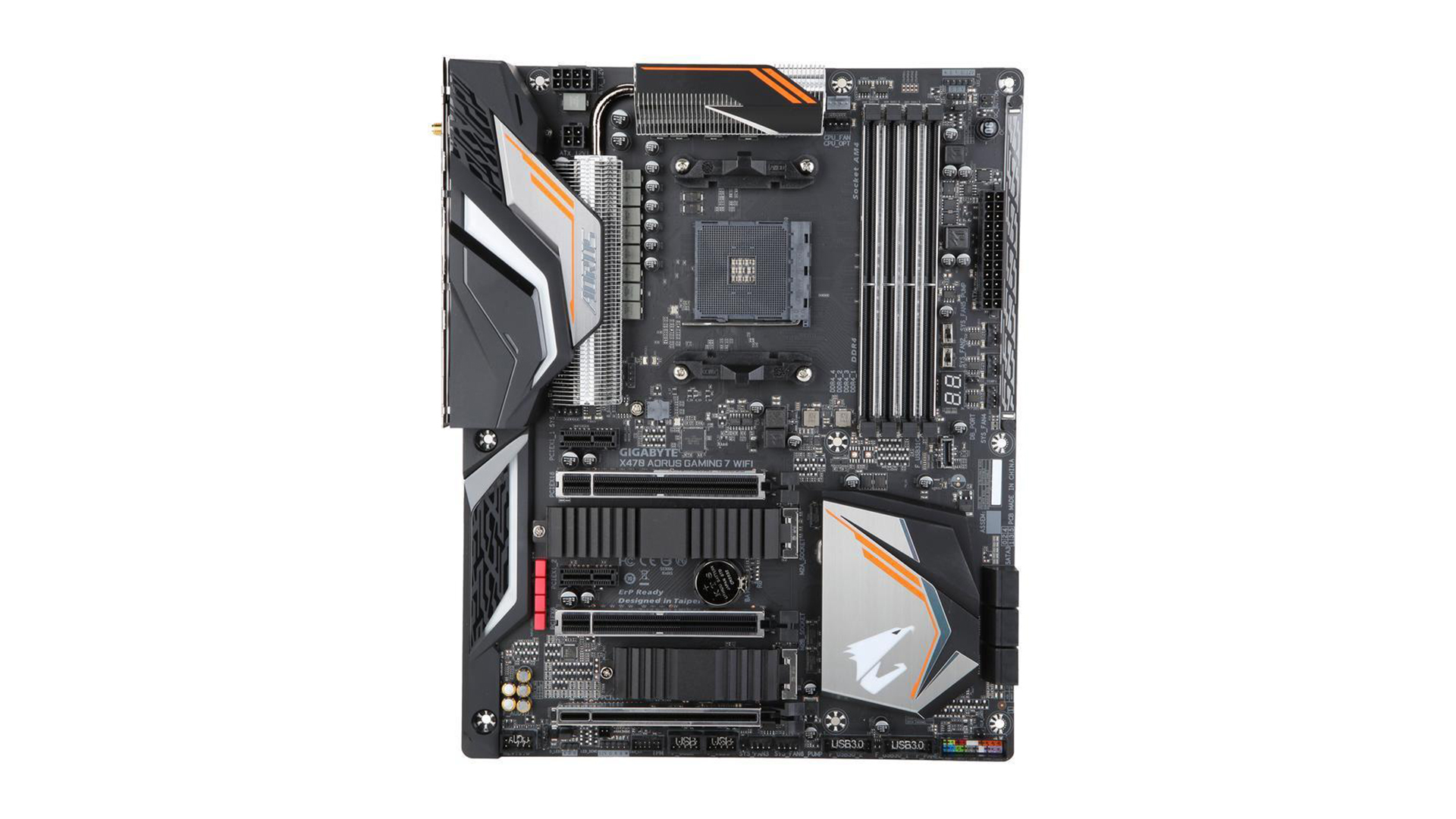
With the X470 Aorus Gaming 7 Wi-Fi, Gigabyte further illustrates is mastery of motherboard design. Rocking the new AMD X470 chipset, allowing full support of the new AMD Ryzen 2nd Generation processors, this is the best motherboard if you’re looking to side with Team Red. What’s more, it supports Quad-GPU SLi and extremely fast RAM (up to 3,600 MHz) for peerless expandability, and thanks to its multi-zone RGB lighting, it looks good while kicking butt.

For the longest time, AMD has been the reigning champion of budget builds, and in 2018 that doesn’t seem to be changing. Marketed exclusively to gamers, the MSI X470 Gaming Plus is loaded front to back with features like two PCIe M.2 slots and quick performance tweaking buttons to make sure you’re on the top of the leaderboards at all times. And, since it’s a gamer-focused motherboard, it comes with all kinds of flashy RGB lighting that you can even customize it from your smartphone.
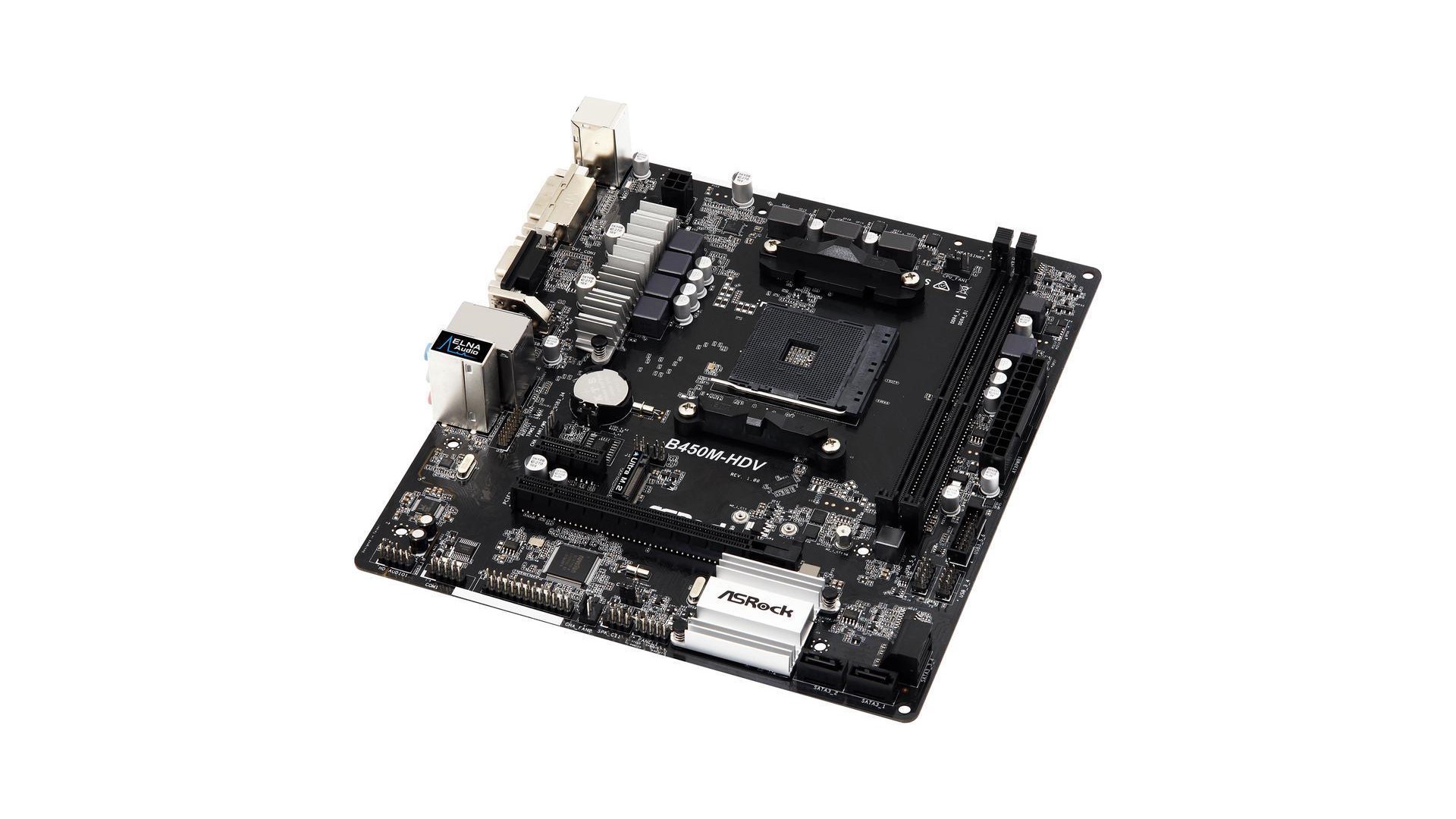
These days, small form-factor PCs are all the rage and with motherboards like the ASRock B450M-HDV, we think they’re going to stay that way. Now, while this motherboard doesn't do SLI and supports only up to 32GB of RAM– it is a B450 unit, after all – it is still compelling due to its low price. Outside of these omissions, you still get a slot for a NVMe SSD and four USB 3.1 Gen 1 ports around back. If you’re looking to build a solid budget gaming PC, this is going to be the best motherboard for you.
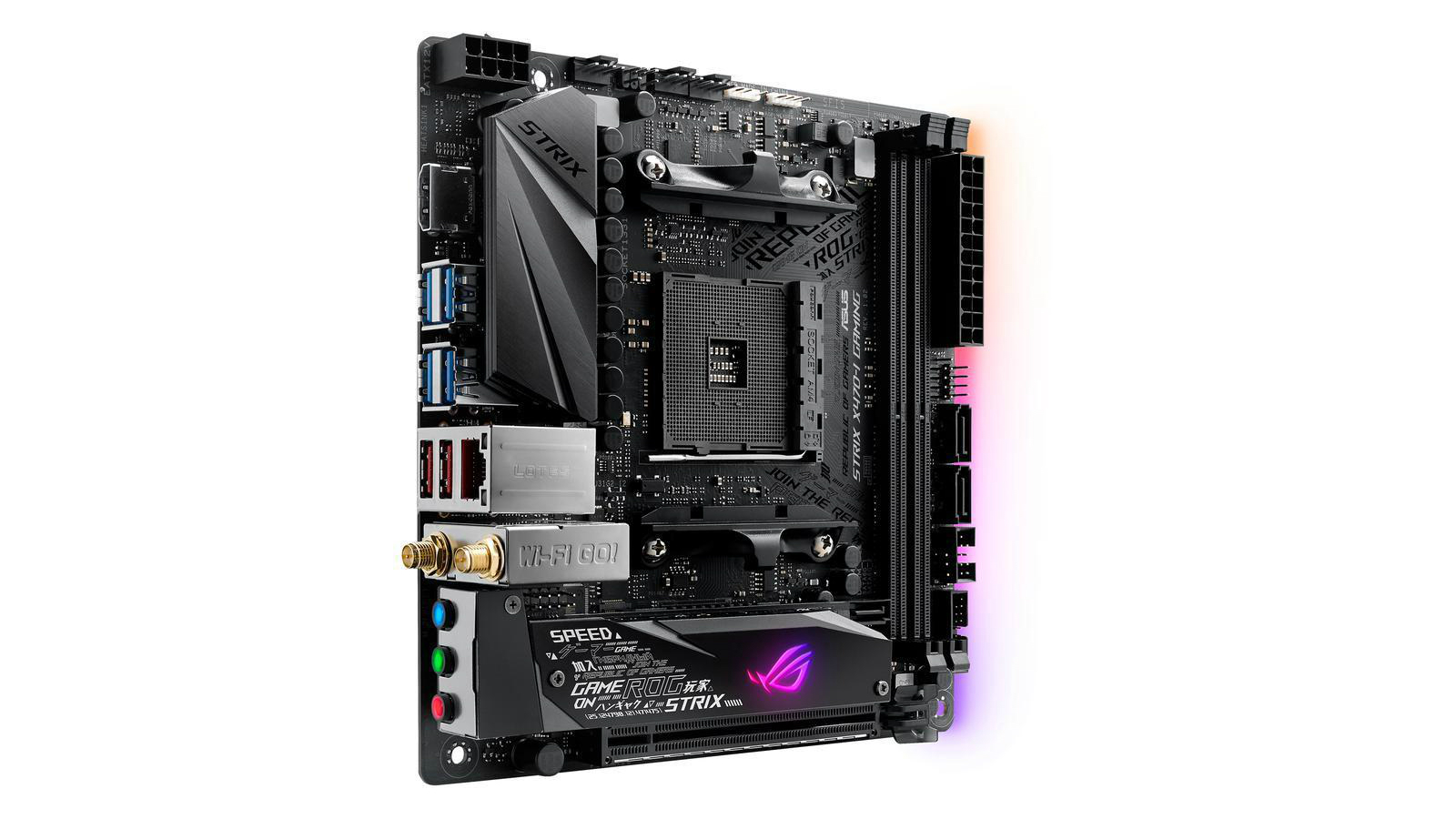
Asus aims to prove that big things can come in small packages with the ROG Strix X470-I. Featuring the latest and greatest AMD chipset, everything in this tiny board is designed with performance in mind. Even down to the BIOS, where you can find a stress test for overclocks before you even boot into Windows. This board even elevates beyond the constraints of the Mnii-ITX form factor by including an M.2 Audio Combo riser, so that you can install your M.2 NVMe SSD without getting in the way of other components.

The X-series processors are here and they're spectacular, so if you want to take advantage of all they have to offer, you need an X-series motherboard. This ASRock X299 is an excellent choice, with support for overclocked memory speeds up to 4400MHz(!!!) and 8 different slots for memory modules. It also supports up to 128GB of RAM, so with an X-series processor and a good graphics card (or 3…) this thing will absolutely tear apart anything you throw at it.

If you’re the type of builder with lots of cash to burn and an ‘everything and the kitchen sink’ build method, the Ryzen Thredripper X399 Professional Gaming board is for you. Not only does it support 4-way SLI or Crossfire configurations, but you can also pack this thing with up to 128GB DDR4 memory. It even features a ton of flashy RGB lighting, so that people can’t help but stare at your rig when they walk in the room. And, if you upgrade to Ryzen Threadripper 2nd Generation, you can use this board, but keep in mind you may have to update your BIOS.
Coming to terms
If you’re unfamiliar about what makes the best motherboards, well, better than the rest, we’d like to include a primer for anyone who might not know that much about them. Motherboards are available in a broad range of different form factors, the most common of which being ATX and Micro ATX. However, there are plenty of more less common form factors including mini ITX and E-ATX. Don’t worry though, most of the best PC cases will support multiple form factors.
Moreover, in our rundown of the best motherboards, we detailed the socket type that each mobo adheres to. For those not in the know, the socket is the part on the motherboard that the CPU locks into. Typically, newer Intel processors use either LGA 1151 or 2066 while the latest AMD Ryzen architecture is designed for the AM4 chipset.
- Next up, these are the best gaming monitors you can buy this year
from TechRadar: computing components news http://bit.ly/1byS9M6
via IFTTT
AMD Ryzen Threadripper 3rd Generation release date, news, and rumors
Now that AMD is on the verge of revealing its 7nm next-generation processors, what will the future look like for Threadripper 3rd Generation – its next line of HEDT processors?
Now that AMD Ryzen is nearly two years old at this point, and we’ve seen Team Red come out with winning CPU after winning CPU, we’ve been asking ourselves where things go from here.
AMD is on the verge of launching its 7nm Zen 2 architecture, according to its own roadmap and CES 2019 plans, which should drastically improve both performance and efficiency and deliver some of the best processors we’ve seen yet. And, while this is definitely exciting news for users looking for the Ryzen 3rd Generation processors, we’re more interested in the next line of Threadripper chips.
With chips like the AMD Ryzen Threadripper 2990WX, AMD blew the lid off of what to expect from HEDT – or high-end desktop – processors. With AMD Ryzen Threadripper 3rd Generation, we’re expecting to see even more cores, performance and value.
Cut to the chase
- What is it? AMD’s next line of HEDT processors
- When is it out? Likely Summer 2019
- What will it cost? TBD
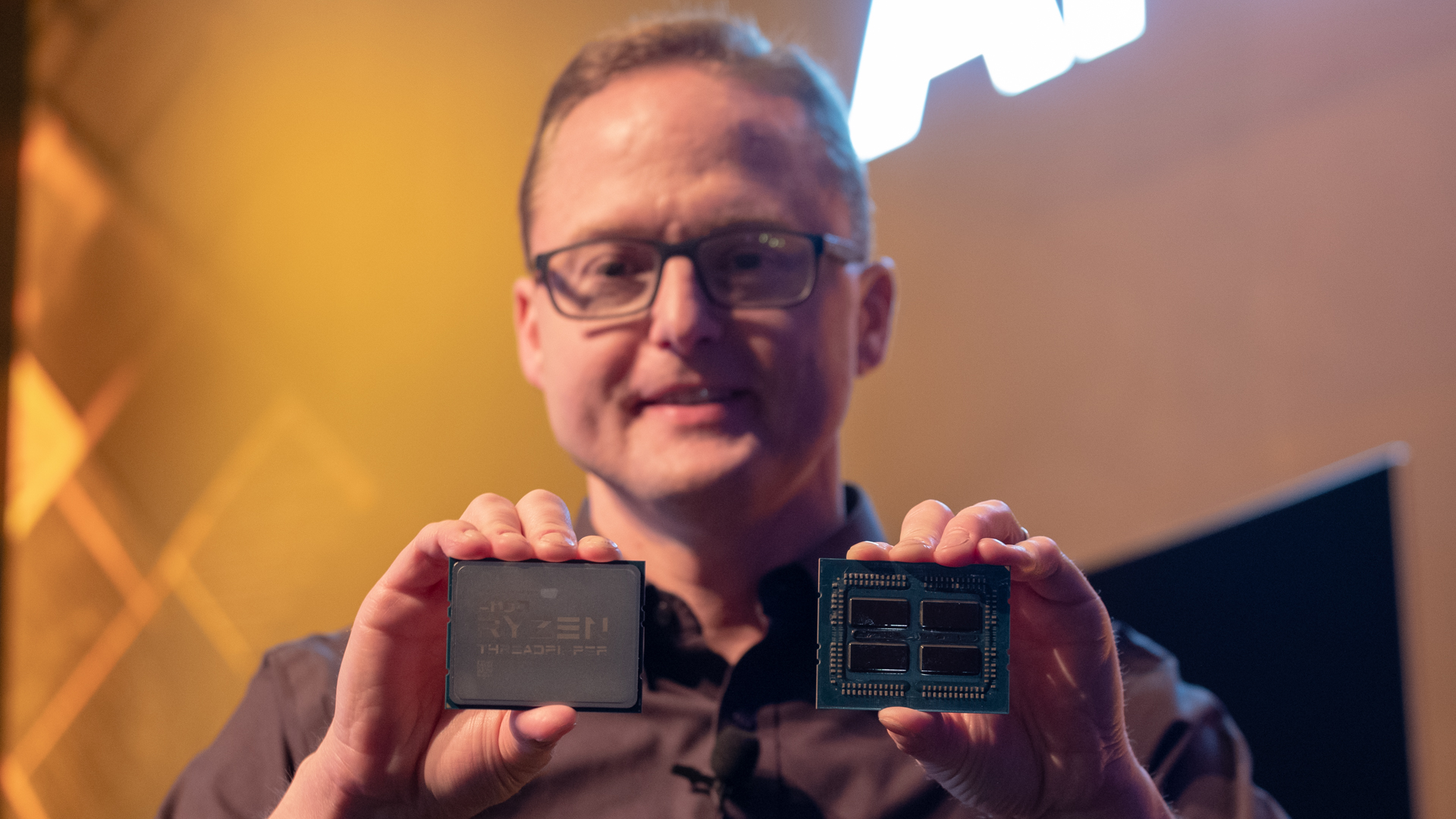
AMD Ryzen Threadripper 3rd Generation release date
While AMD hasn’t come out and announced the release date for its next Threadripper chips, the last two Threadripper generations have been pretty consistent, so we have a basis for speculation.
Both the original Threadripper and Threadripper 2nd Generation launched in August of 2017 and 2018, respectively. We’re fairly sure that AMD is going to follow the same general release schedule this time around, but, obviously we don’t know that for sure.
AMD’s latest roadmap shows its Zen 2 architecture launching in 2019 – with a likely reveal at CES 2019. If AMD does reveal Zen 2, along with Ryzen 3rd Generation at CES, it’s likely that we’ll see Threadripper 3rd Generation at Computex 2019, with a release date following in the following months.
We’ll update this article as soon as we hear more substantial rumors about the release date.
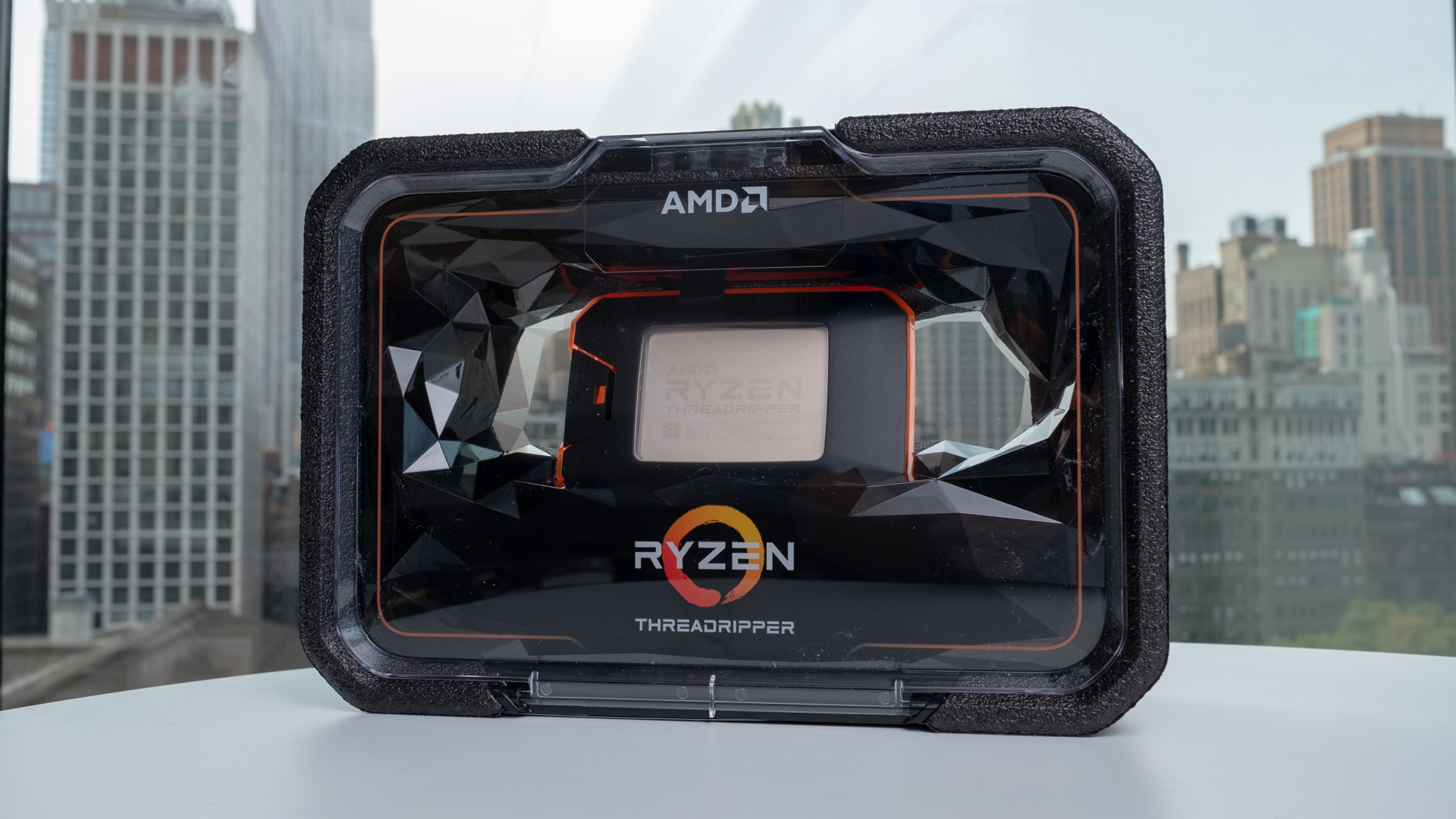
AMD Ryzen Threadripper 3rd Generation price
Now, so far ahead of AMD Ryzen Threadripper 3rd Generation’s launch, we don’t have any official pricing information, but we can look at past generations to get an idea of what AMD’s next HEDT chips will cost.
The original lineup of Threadripper topped out with the $999 (£999, AU$1,439) AMD Ryzen Threadripper 1950X, but the second generation introduced surprisingly lower priced replacements. There were also two higher specced – and higher priced – additions. We believe Threadripper 3rd Generation will follow the latter model.
The prices of AMD Ryzen Threadripper 2nd Generation chips are as follows:
- Ryzen Threadripper 2990WX: $1,799 (£1,639, AU$2,679)
- Ryzen Threadripper 2970WX: $1,299 (£1,159, AU$2,039)
- Ryzen Threadripper 2950X: $899 (£809, AU$1,415)
- Ryzen Threadripper 2920X: $649 (£583, AU$1,019)
AMD could very well surprise us and introduce an even higher-end SKU, but we don’t think that’s likely. Stay tuned, and we’ll update this page as soon as we hear any Threadripper 3rd Generation price information.

AMD Ryzen Threadripper 3rd Generation specs
With AMD Ryzen Threadripper 3rd Generation, we expect to see a huge bump in core counts, efficiency and per-core performance with Threadripper 3rd Generation. If you need a refresher on last year’s Threadripper lineup’s specs they’re as follows:
- Ryzen Threadripper 2920X: 12-cores, 24-threads, clocked at 3.5GHz to 4.3GHz
- Ryzen Threadripper 2950X: 16-cores, 32-threads, clocked at 3.5GHz to 4.4GHz
- Ryzen Threadripper 2970WX: 24-cores, 48-threads, clocked at 3.0GHz to 4.2GHz
- Ryzen Threadripper 2990WX: 32-cores, 64-threads, clocked at 3.0GHz to 4.2GHz
We’re sure that with the move to 7nm, AMD is going to massively improve specs.But, with Threadripper 3rd Generation, or Castle Peak, rumors are thin on the ground. However, there is plenty of buzz about the AMD Ryzen 3000 series, not to mention the 64-core AMD Epyc server CPU.
There is already speculation that suggests there will be a 16-core, 32-thread Ryzen 3000 CPU, with higher instructions per clock (IPC) than previous processors. That’s double what the Ryzen 7 2700X features, and if AMD is able to do the same with Threadripper – we could see a 64-core HEDT chip.
It wouldn’t even be the first 64-core processor in AMD’s lineup. AMD recently showed off its latest Epyc processors, based off its Rome microarchitecture, with up to 64-cores.
If AMD is able to bring those high core counts to Castle Peak HEDT processors, we could see AMD absolutely dominate Intel’s Basin Falls Refresh. And, if Intel can’t answer with anything but 14nm silicon, AMD might claim the HEDT throne like it did when it topped Intel’s mainstream sales.
- Here are the best processors you can buy today
from TechRadar: computing components news http://bit.ly/2Ti0phu
via IFTTT
Best computer 2019: the best PCs we've tested
In 2019, the best PCs keep getting more and more advanced with processors that start with at least four-cores and graphics cards evolve to render realistic ray traced lighting. If you're looking to stay current, you’ll need one of the best computers even if all you do is browse the internet. It's all to easy for your PC to get slowed down by loading too many ads or ever increasingly high-res video.
Good news is buying a PC has never been cheaper. You can easily spend 500 bucks and get a capable PC or even an all-in-one desktop that comes with its own built in screen. PCs are easily upgradable, allowing you to keep the best PCs up to date with one of the best graphics cards, a bigger or faster best SSD and more of the best memory.
Still, shopping for the best PC isn’t quite as easy as it may sound. When we decided to put this list together, we had to acknowledge that the best PCs strike a balance between price and performance. So, after comprehensively testing, reviewing and ranking all the PCs on this list, we’ll help you find which PC is right for you.

For lack of a better word, the Dell XPS Tower Edition is stealthy. Looking quite similar to that old computer that your parents had hidden beneath the desk, this boring exterior belies an exciting array of components. Inside you’ll find your choice of the latest in GPU tech, in addition to a blazing-fast 7th generation Intel CPU and a spacious hard drive and/or SSD. Now, the Special Edition is only available in the US, but our readers in the UK and Australia will still be able to buy the regular Dell XPS Tower and beef it up to the same level through Dell’s configuration page.
Read the full review: Dell XPS Tower Special Edition

The Microsoft Surface Studio is one of the most bougie PCs on the market. It shakes up the all-in-one formula of putting all the components behind the screen, and instead moves everything to the base. The resulting device has one of the thinnest 28-inch PixelSense displays that puts even most 4K screens to shame. What’s more, the fully articulating stand makes it an extremely flexible tool for work and play with Surface Pen support. All in all, the Surface Studio is an exceptional work of, and for, art.
Read the full review: Surface Studio
See more like this: The best all-in-one PCs

If you’re looking for a great desktop experience, but don’t have a lot of space, look no further than the Intel Hades Canyon NUC. In this tiny bare-bones PC, you have an insanely powerful 8th-generation Intel Core i7 processor, and discrete-class Radeon graphics – once you throw in some RAM and storage, you’ll be able to conquer the best PC games without a care in the world. Sure, it can’t really stand up against a full-sized desktop, but when space is short, or you’d rather just have a PC that looks like a set-top box – it’s totally worth it.
Read the full review: Intel Hades Canyon NUC
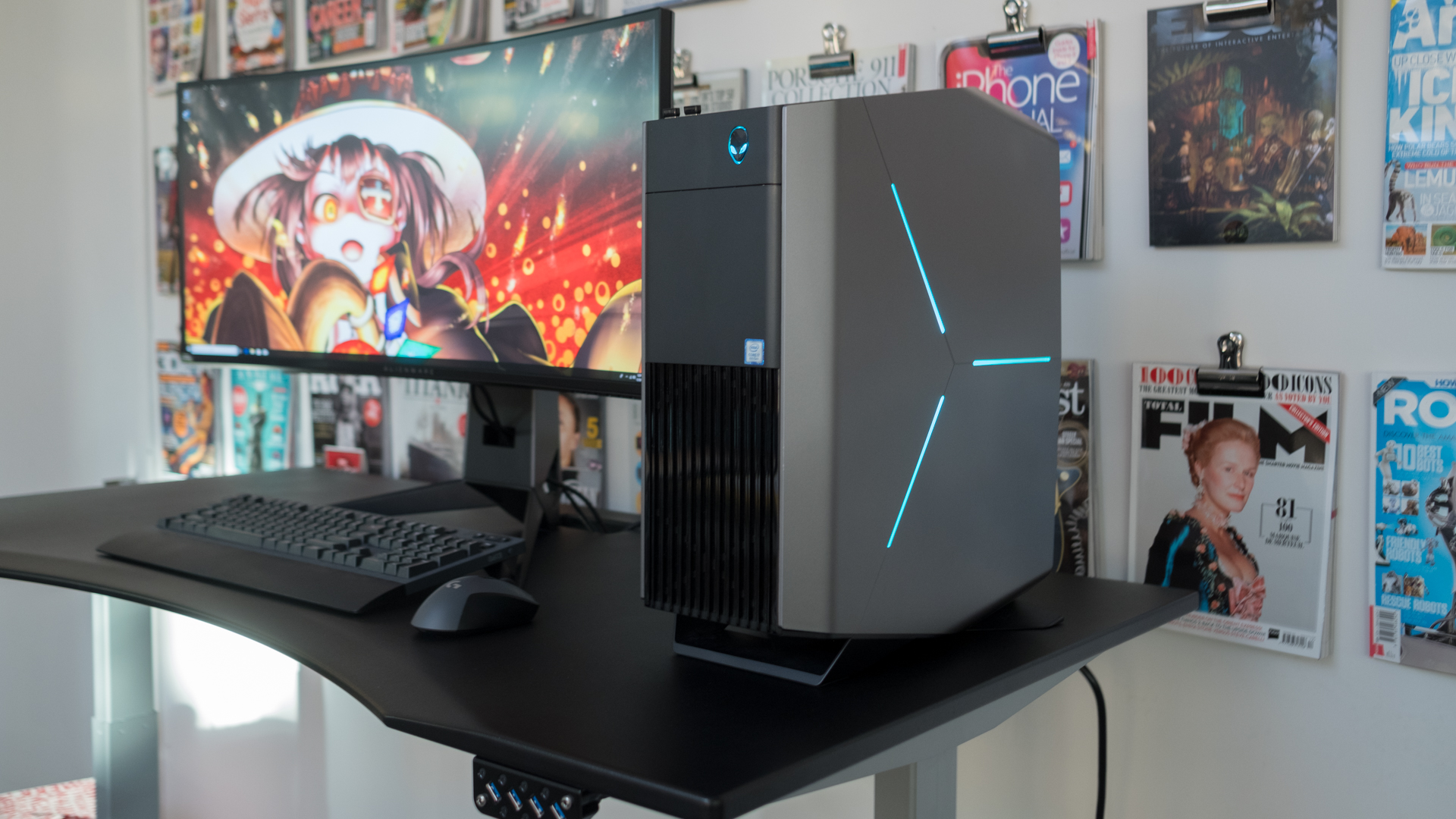
The Alienware Aurora R7 isn’t just a great gaming PC, but it’s one of the best PCs you can buy today. Not only does it feature fantastic performance with its 8th-generation Intel Core processor and GTX 10 series graphics, but this power is conveniently stored away in its compact chassis. It’s even surprisingly affordable, considering the power on offer, and it’s even easily upgradeable, despite its unique build. With the Aurora R7, Alienware continues its journey back to the top of the best PCs.
Read the full review: Alienware Aurora R7
See more like this: The best gaming PCs

Positioned as a “console killer,” the MSI Trident 3 looks a lot like an Xbox One X and PS4 Pro, but it’s a far more powerful PC that feels just right in your living room. Complete with all the ports you could ever dream of, the MSI Trident 3’s advantages are clear. Still, in trying to be as thin and light as possible, the MSI Trident 3 comes equipped with a 330W external power supply brick, resembling some of the least attractive console designs.
Read the full review: MSI Trident 3

Apple has a reputation for crafting computers that are a bit overpriced for what they have on offer, but the Mac mini takes that reputation and throws it in the garbage. The 2018 Mac mini isn’t just an attractive small-form-factor PC, but it also has high end desktop parts built in, making it a great purchase for anyone that already has a slew of Mac-ready peripherals. Plus, opposed to Apple’s recent output, you can actually upgrade the memory – or you can just kit it out with 64GB at checkout.
Read the full review: Apple Mac Mini
See more like this: The best Macs

Though at first you might confuse it for a fabric-woven Mac Pro refresh, the HP Pavilion Wave is anything but. This compact Windows machine packs in 6th-generation Intel Core processors and optional discrete AMD graphics with a uniquely integrated Bang & Olufsen speaker. Wrapped in a handsome fabric exterior, this is the perfect PC to have on the desk, as it radiates crisp sound while you browse the web or watch movies.
Read the first look: HP Pavilion Wave

It may look like a thumb drive at first glance, but the Intel Core Compute Stick has more than meets the eye. It’s actually a palm-sized PC that can plug into any screen with an HDMI input. It starts out with a lowly 1.33GHz Intel Atom cpu running Linux, but it is configurable up to an Intel Core m5 processor – which makes this one of the best PCs if you need to get some work done on the go, without having to haul around a laptop.
Gabe Carey has also contributed to this article
- While you’re at it, we’ve also found the best gaming desktop PC you can buy
from TechRadar: computing components news http://bit.ly/1NDAkRR
via IFTTT
AMD in 2018: impressive leaps forward with many, many stumbles
AMD’s staunchly amazing 2017 was so hard to follow up that often compare company’s performance 2018 to Age of Ultron in the grand scheme of the Marvel Cinematic Universe. (This is going to be a long, winding metaphor here, but stick with us here) Last year, was practically AMDs first Avengers movie in that it pulled off what nothing we had seen before with Ryzen making Intel quake in its boots, the first 16-core HEDT chips and the first few exciting graphics cards from AMD in a long time.
This year was a definite improvement with the introduction of Ryzen 2nd Generation and Threadripper 2nd Generation CPUs, but there was also the severe lack of almost any new discrete GPUs whatsoever. More than anything this year felt like a hold-over – almost a preamble – to AMD’s version of Infinity War that will herald its first 7nm processors and graphics cards coming next year.

Winding up for its biggest pitch
AMD couldn’t have had a stronger start for 2018. The company was performing well off the back of its new processor families while largely dodging the Spectre and Meltdown vulnerabilities plaguing Intel.
At CES 2018, AMD also made a strong showing announcing new entry-level, quad-core mobile processors and powerful Ryzen APUs that would introduce discrete-class Vega graphics to desktop CPUs. The AMD Ryzen 5 2400G and Ryzen 3 2200G were easily highlights of the year in their ability to play modern games at Full HD without breaking a sweat.
AMD’s integrated graphics were so impressive that Intel and AMD teamed up to create its first mashup chip, Kaby Lake G. This chip found its way into the impressively powerful, yet small, Intel Hades Canyon NUC, as well as some gaming capable 2-in-1 laptops like the Dell XPS 15 2-in-1 and HP Spectre x360 15.
In a true show of force, AMD even announced it plans for the rest of the year all the way into 2020. In 2018, AMD planned to introduce its 12nm Zen+ architecture, would lead to Ryzen 2nd Generation and Ryzen Threadripper 2nd Generation processors. Beyond that, the company also laid out its plans to introduce 7nm Zen 2 architecture following that, as well as 7nm Vega and Navi architectures on the graphics card side.
Silicon companies typically don’t reveal what they have in store for even the coming year, so to get detailed, multi-year roadmaps like this was incredible and unheard of. We had to give AMD props for this.
Riding on and against the tide of Crypto
Like Nvidia, AMD was heavily impacted by crypto, which is to say the company was both profiting from the extreme demand for bitcoin mining GPUs while trying to stay true to gamers first. The company was doing so well from cryptocurrency that it even managed to outpace the popularity of Nvidia for a short time.
Despite, doing extremely well thanks to mining, the company promised its first-priority was to gamers. Interestingly, to try and stem the shortage of graphics cards, AMD suggested mining with its Threadripper high-end desktop processors.

Partial rise
Thankfully, we wouldn’t have to wait too long into the year for some new Ryzen 2nd Generation processors. The first quartet of AMD 12nm processors would arrive on April 19th with the introduction of the Ryzen 7 2700X, Ryzen 7 2700, Ryzen 5 2600X and Ryzen 5 2600.
All of AMD’s Ryzen 2nd Generation processors pushed the envelope with their higher clock speeds and enhanced overclocking capabilities. In our reviews we found the AMD Ryzen 7 2700X to completely overtake Intel’s existing flagship mainstream CPU, the Intel Core i7-8700K, while the AMD Ryzen 5 2600X was easily the best mid-range CPU for power users.
Unfortunately, AMD didn’t really produce nearly as many Ryzen 2nd Generation processors as it did for its previous family of chips.
In fact, we had to wait until September for AMD to release its next Ryzen processors, the Ryzen 5 2500X and Ryzen 3 2300X, but these were chips that average consumers couldn’t even purchase. Instead, AMD chose to reserve its lower end chips for OEMs and system integrators. To this day, you still can’t get these CPUs without buying a pre-built PC assembled around them.
Overall, we would say AMD did a great job of delivering even more impressive CPUs, but they felt like much more of a blip than setting the narrative for all of 2018 as the previous generation did last year.

Ripping it up
AMD really threw down the gauntlet at Computex 2018. The company saw Intel’s 28-core processor and raised it a 32-core CPU mammoth, which we would later learn was the AMD Ryzen Threadripper 2990WX.
At the computing-focused show, AMD also revealed a new nano-version of the Radeon RX Vega 56 and details of its next-generation 7nm Radeon Instinct graphics card – unfortunately, this would the last time AMD would talk about graphics cards until much later into the year.
Not long after Computex, AMD official announced four new Ryzen Threadripper 2nd Generation processors in August. These HEDT processors that not only increased core counts, but also performance while lowering prices.
The Ryzen Threadripper 2950X was the perfect example of our latter points, as it vastly outpaced the outgoing Ryzen Threadripper 1950X while coming at a slightly lower price point. Meanwhile, the 32-core and 64-thread Ryzen Threadripper 2990WX delivered the highest multi-core performance we had ever seen from a high-end desktop PC.
It seemed like AMD was on track to completely dominate the high-end desktop market, unfortunately, the company waited until the end of October to release the Ryzen Threadripper 2970WX and Ryzen Threadripper 2920X. By this time Intel has announced its Basin Falls Refresh HEDT family and the greater threat of the Intel Core i9-9900K.

Better late than never
If there was one thing AMD lacked in 2018, it was graphics cards. Aside from the impressive integrated graphics the company introduced at the start of the year, AMD only announced a ‘new’ range of Radeon RX 500X Polaris GPUs for OEMs (which were sadly only new in name), a nano-sized version of its existing Radeon RX Vega 56 and a new Radeon RX 590 for the mid-range market.
This practically left Nvidia’s new Turing RTX 20-series of graphics cards unchallenged in 2018, but we have high hopes for the 7nm graphics cards AMD is due to announce in 2019.

What will 2019 have in store for AMD
2019 will be arguably AMD’s biggest year yet. The company has already announced that it would talk about its 7nm processors and graphics cards at CES 2019.
This should lead to AMD introducing its 7nm Zen 2 architecture that will lead to Ryzen 3rd Generation and Ryzen Threadripper 3rd Generation processors. From what we know so far, AMD next CPU family will start with quad-core entry-level chips and stack all the way up to 16-core mainstream processors. We may even dare to dream of 48-core or 64-thread HEDT processors on the HEDT front.
Meanwhile, AMD 7nm GPU architecture could lead to the introduction of both Vega II and Navi graphics cards we sorely wanted this year.
If AMD can successfully pull off all three of these products next year, it will assemble its Infinity Gauntlet of silicon to snap Nvidia and Intel out of existence (or at least from their comfortable thrones). AMD’s greatest threat next year will be Intel, as the company is gearing up to introduce its 10nm Sunny Cove processors and we might even see the introduction of Intel Graphics Cards as well.
No matter how you slice it, 2019 should be one of the most exciting years in computing and AMD will undoubtedly play a big part of it.
from TechRadar: computing components news http://bit.ly/2Qbk7JJ
via IFTTT
Intel in 2018: wait, how many processors?
You can’t avoid the fact that 2018 was simply a bizarre year for PC components overall – especially when it comes to the best processors. Intel spent the whole year churning out microarchitecture after microarchitecture, in an attempt to prevent AMD from taking too much market share.
But, throughout the myriad products Intel released this year, we were left wondering if there was something missing.
So, we’re going to dive into everything Intel achieved over the last year, creating a sort of report card on how the tech giant handled 2018.
Under the Spectre of a Meltdown
Intel didn’t exactly start 2018 off on the right foot – a white paper from Google Project Zero revealed the Spectre and Meltdown exploits that made 90% of Intel processors vulnerable to attack. Intel immediately responded, saying it would fix the exploits. However, there was a ton of confusion out there related to these fixes.
Initially, Intel suggested that these fixes would impact stability and performance by up to 30%, which it later redacted, saying that the slowdown would be ‘workload-related’, and that most users wouldn’t notice any change. And, eventually the patches made their way through Windows Update, but not everyone got a happily ever after.
In April, Intel said that certain older processors wouldn’t be getting the update, namely the Intel Core i7 900 series, due to issues with the microarchitecture itself. It also cited the fact that most of these older processors weren’t being serviced anyway.
Luckily, if you buy a newer Intel Coffee Lake Refresh processor you have nothing to worry about.

Name a more ambitious crossover event
In a move that threw us all for a loop, Intel teamed up with AMD earlier in the year to produce 8th-generation Kaby Lake processors for laptops with AMD Vega graphics. Especially in a year when Intel has been plotting its own GPUs, this team up with its biggest rival kind of came out of nowhere. But, you know what? It paid off.
These Kaby Lake G processors provided awesome performance without some of the pitfalls that dedicated graphics experience. Laptops like the Dell XPS 15 2-in-1 showed great performance, not just in professional workloads, but even in gaming. That’s right, these laptop CPUs enabled a pretty decent gaming experience on laptops that were thin, light and convertible.
Pint-sized gaming computers
Of course, Intel doesn’t just make chunks of silicon, it also makes full-fledged computers occasionally. And, the Intel Hades Canyon NUC, beyond having an awesome name, is genuinely one of the best gaming PCs you can get – as long as you’re looking for a very tiny machine.
Now, while this tiny PC doesn’t come with RAM, storage or an OS – you’ll have to supply all that on your own, you are paying just $799 (£743, AU$1,099) for a pretty powerful little machine. It packs one of those Kaby Lake G processors we just talked about, which means it can provide GTX 1060-level performance for a fraction of the price of a similarly specced gaming laptop.
And, because it’s a barebones system, you can upgrade it however you want. Well, barring the GPU and CPU, of course – at least it has ThunderBolt 3 for external graphics.

All the cores!
Back at Computex 2018, we were sure we’d get some new processors from either Intel or AMD. And, while both manufacturers teased some HEDT chips, we just got some vague glimpses. But, the chip Intel teased was absolutely insane.
We’re talking a 28-core, 56-thread behemoth that was overclocked to 5.0GHz across all cores. Turns out that it was overclocked to high heaven using some exotic cooling methods, but it was still impressive anyways.
Turns out that it wasn’t a consumer chip at all, but instead the Intel Xeon W-3175X workstation chip. This chip isn’t quite out yet, but it’s around the corner and is rumored to launch it at a whopping $4,000 (£4,000, about AU$5,600) price tag. Still, dreaming about such an insane consumer processor was fun while it lasted.
Intel also used the event to introduce a special anniversary processor in the form of the Intel Core i7-8086K to commemorate the original 8086 CPU that released 40 years ago.
Just stay mobile
Coffee Lake was already a massive success, thanks to the awesome desktop performance it offered, but when Intel brought Coffee Lake H-series processors for laptops, the performance was off the charts.
Coffee Lake H-series brought Intel’s 6-core 12-thread mobile processors to laptops for the first time, including the overwhelmingly powerful Intel Core i9-8950HK, found in even the thinnest workstation-class laptops like the MacBook Pro 15-inch.

Where these processors really shined, however, was in the best gaming laptops. Devices like the Razer Blade 15 and MSI GS65 Stealth were able to stay thin, light and aesthetic while providing nearly desktop-class performance.
However, some manufacturers took that thin, light and powerful concept a little too far. We already mentioned the 15-inch MacBook Pro, but when that thing launched back in July, there was an uproar about its tendency to thermal throttle almost immediately. This problem was patched out by Apple almost immediately – but it still runs dangerously hot.
The Core i9-8950HK offers fantastic performance, but it basically requires a heavy duty laptop to reach its full potential. But, the rest of the Intel Coffee Lake H-series mobile processors don’t have the same problem.
How many lakes???
Intel has never been the easiest manufacturer to follow, but it seems like in 2018, there was just a deluge of different microarchitectures, all of which named after some fictional lake. Beyond the ever-elusive Cannon Lake, we got Whiskey Lake, Cascade Lake, Amber Lake and Coffee Lake Refresh. That’s not even mentioning the non-lake microarchitectures like the HEDT-focused Basin Falls Refresh.
Most of the year ended up being a guessing game, trying to pin rumored silicon to the lake it belonged to. And, with Cannon Lake and Sunny Cove already rumored for 2019, it looks like the same shotgun approach is going to repeat itself next year.
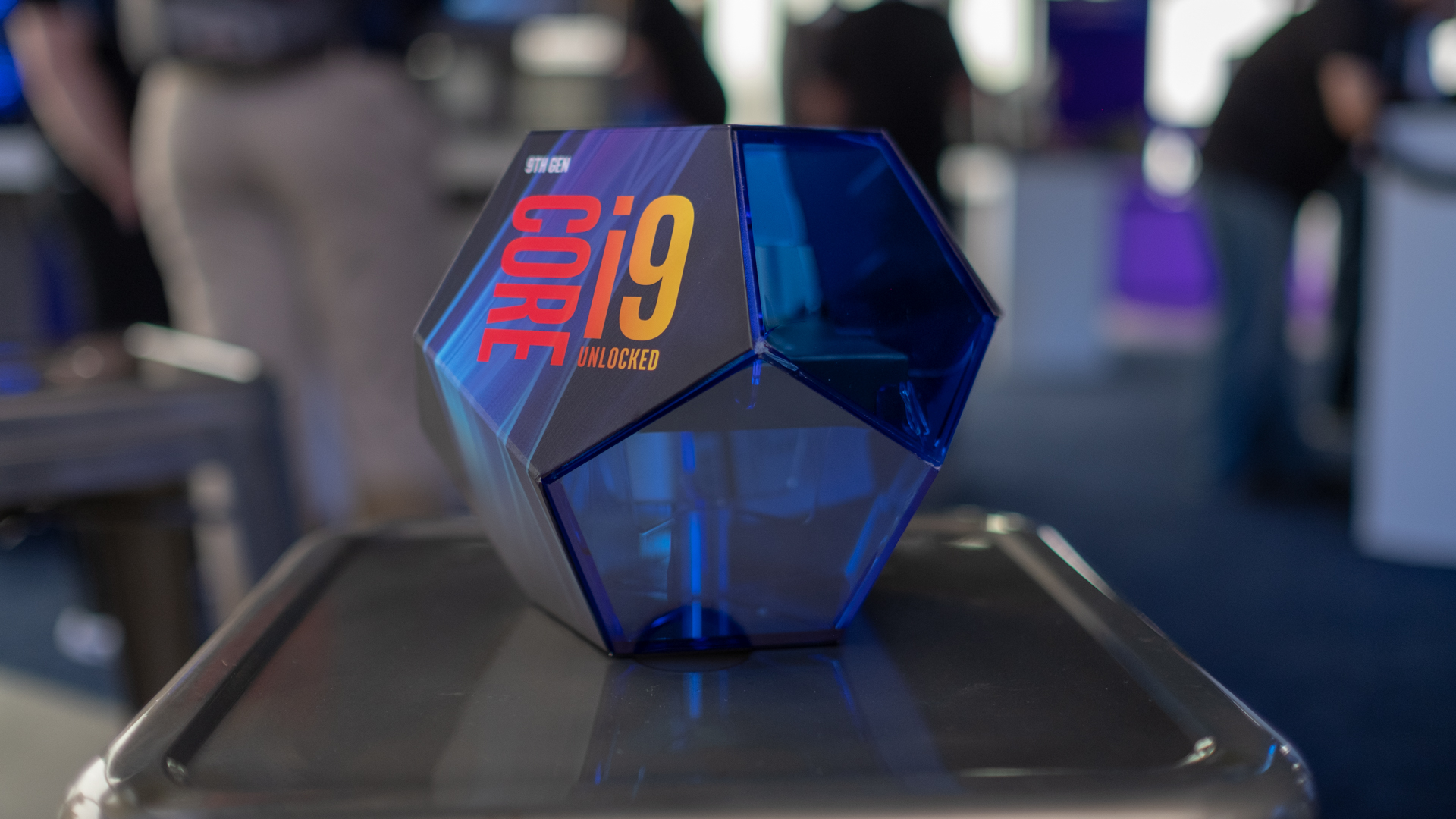
A refreshing move
After months of speculation and false leads, Intel finally released its 9th-generation Coffee Lake Refresh consumer and Basin Falls Refresh HEDT chips. Basin Falls Refresh might not have been all that exciting, but the level of performance offered by Coffee Lake Refresh is worth a mention.
The Intel Core i9-9900K, by itself, was worth all the headaches – a 8-core, 16-thread CPU that absolutely demolished the AMD Ryzen 7 2700X – along with many Threadripper 2nd Generation chips. You see, it wasn’t just the core counts that matter here – it’s the clock speeds. This consumer chip is able to boost up to 5GHz – and that’s before overclocking.
Less than a month later, Intel would also release the new Intel Core i9-9980XE to reclaim the high-end desktop processor crown.
What does 2019 have in store for Intel?
2018 was a year of reactions and delays from Intel, as it desperately fought to maintain its place in the market, and basically lost. However, don’t think for a second that Intel is down for the count.
After years of delaying its 10nm Cannon Lake chips, there are already rumors that Intel is going to release Sunny Cove next year, which is … well, it’s another 10nm microarchitecture. We should see increased performance and efficiency with this shrink in die size, but with AMD getting ready to launch 7nm Ryzen 3 processors in 2019, the competition is only going to get more heated from here.
What should be particularly interesting, however, is Intel’s GPUs. Intel graphics cards have been lurking in the shadows for a while now. We’re not sure what these graphics cards will be capable, and we likely won’t see them actually materialize in 2019. But, if its Gen11 integrated graphics are any indication, we’re going to brace ourselves for a late entry in the Nvidia vs AMD GPU war.
- Here are the best processors you can pick up today
from TechRadar: computing components news http://bit.ly/2CH8eHR
via IFTTT